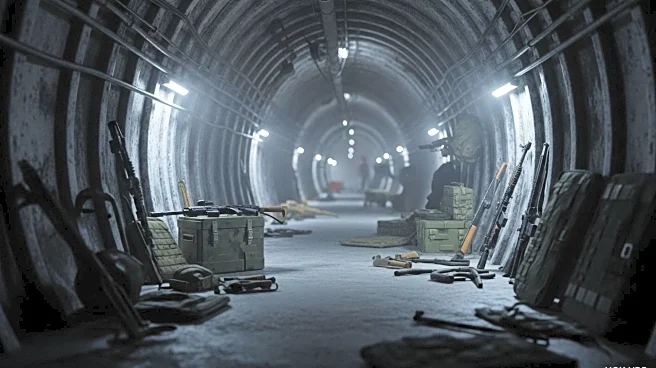What is the story about?
What's Happening?
Russian forces have conducted a third subterranean ambush in Ukraine, utilizing an underground gas pipeline near Kupyansk in the Kharkiv region. This operation involved Russian soldiers using carts and electric scooters to traverse approximately 13 kilometers under the Oskil River. Ukrainian officials initially denied the reports but later confirmed the operation, stating that the pipeline was destroyed and some Russian soldiers were captured. Despite these claims, open-source battlefield trackers indicate Russian advances near Kupyansk, a strategic rail junction. This ambush follows previous similar operations in Avdiyivka and Sudzha, showcasing Russian military's growing experience in executing risky maneuvers.
Why It's Important?
The repeated use of subterranean tactics by Russian forces underscores their adaptability and strategic ingenuity in the ongoing conflict with Ukraine. These operations pose significant challenges to Ukrainian defenses, as the extensive underground network is difficult to monitor and secure. The success of such tactics could potentially shift the balance of power in contested regions, impacting Ukraine's ability to maintain control over strategic locations. Additionally, these developments highlight the ongoing complexity and evolving nature of the conflict, which continues to draw international attention and concern.
What's Next?
Ukrainian forces are likely to enhance their surveillance and defensive measures to counteract further subterranean incursions. This may involve increased use of technology and intelligence to monitor underground activities. The international community, particularly NATO allies, may also consider providing additional support to Ukraine to bolster its defensive capabilities. The situation remains fluid, and further Russian advances could prompt a reevaluation of military strategies by both Ukraine and its allies.
Beyond the Headlines
The use of subterranean tactics raises ethical and legal questions regarding warfare methods and the protection of civilian infrastructure. The destruction of pipelines and other critical infrastructure can have long-term consequences for local populations, affecting access to essential services and economic stability. This aspect of the conflict may lead to increased scrutiny and calls for accountability from international human rights organizations.
AI Generated Content
Do you find this article useful?
















